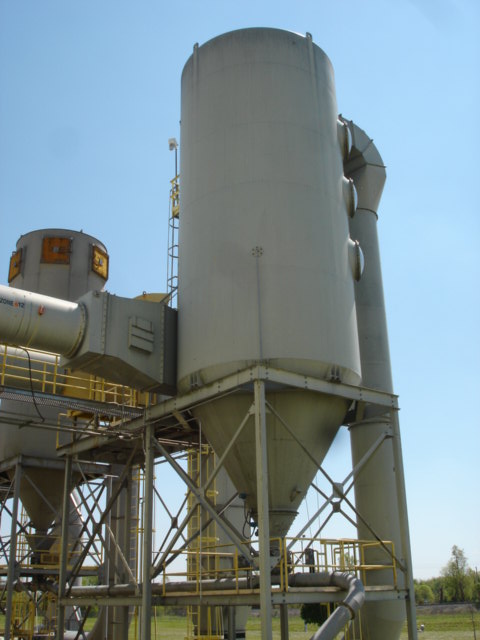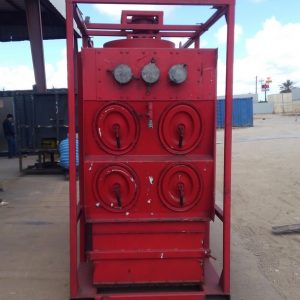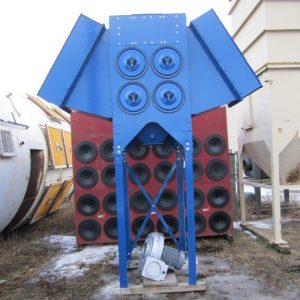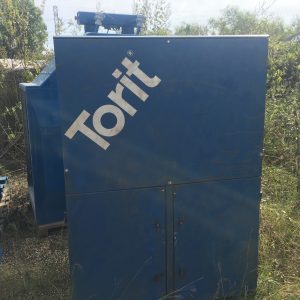As is evident by their shape, and for that matter name, cyclone dust collectors use cyclonic action to separate dust particles from the gas stream. In a typical cyclone, the dust gas stream enters at an angle and is spun rapidly. The centrifugal force created by the circular flow throws the dust particles toward the wall of the cyclone. After striking the wall, these particles fall into a hopper located underneath.
There are three major types of cyclone dust collection systems:
Single-Cyclone Dust Collector
They create a dual vortex to separate coarse from fine dust. The main vortex spirals downward and carries most of the coarser dust particles. The inner vortex, created near the bottom of the cyclone, spirals upward and carries finer dust particles.
Multiple-Cyclone Separators
Also known as multiclones™, multiple-cyclone separators consist of a number of small-diameter cyclones, which operate in parallel and having a common gas inlet and outlet. Multiclones™ operate on the same principle as cyclones—creating a main downward vortex and an ascending inner vortex.
Multiclones™ are more efficient than single cyclones due to the fact that they are longer and smaller in diameter. The longer length provides longer residence time whereas the smaller diameter creates greater centrifugal force. These two factors result in better separation of dust particulates. The pressure drop of multiclone™ collectors is higher than that of single-cyclone separators.
Babcock & Wilcox is the original manufacturer and trademark holder of Multiclone™ dust collectors and replacement parts formerly offered by Western Precipitation. Multiclone™ dust collectors are found in all types of power and industrial applications, including pulp and paper plants, cement plants, steel mills, petroleum coke plants, metallurgical plants, saw mills and other kinds of facilities that process dust.
Secondary Air Flow Separators
his type of cyclone uses a secondary air flow, injected into the cyclone to accomplish several things. The secondary air flow increases the speed of the cyclonic action making the separator more efficient; this is due to it intercepting the particulate before it reaches the interior walls of the unit; and it forces the separated particulate toward the collection area. The secondary air flow protects the separator from particulate abrasion which allows the separator to be installed horizontally. This is due to gravity not being depended upon to move the separated particulate downward.






